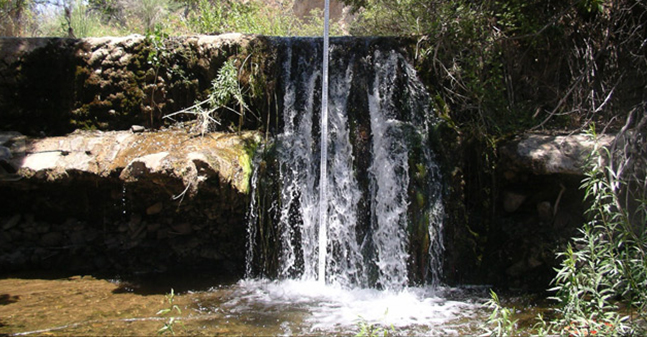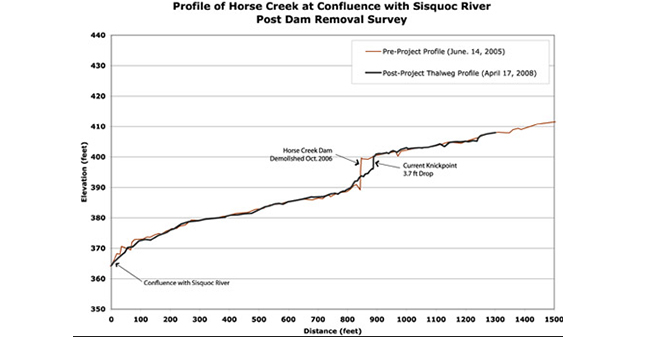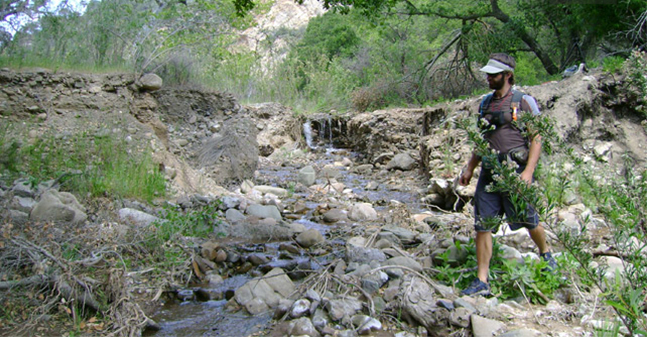Dam Removal
Horse Creek Dam Removal
Location: Horse Creek, Tributary to Sisquoc River, Central California
Clients and Partners: Los Padres National Forest, Stoecker Ecological, Community Environmental Council, California Department of Fish and Game
Horse Creek is a tributary to the Wild and Scenic designated Sisquoc River in northern Santa Barbara County. Horse Creek lies entirely within the Los Padres National Forest, with most of the watershed lying within the San Rafael Wilderness. This stream is believed to have historically served as spawning and rearing habitat for Southern Steelhead, an anadromous form of rainbow trout that is listed as endangered under the Federal Endangered Species Act.
On October 20, 2006, a defunct dam located on lower Horse Creek was demolished using explosives. The 4.5-foot tall and 60-foot wide dam was built in 1968 and likely served as a debris and sediment catchment basin. The following winter the region experienced a large flood event. Anecdotal and field evidence suggests that the basin upstream of the dam completely filled-in with sediment during the first few winters. Over time, the downstream channel incised below the dam, creating a drop over the dam face that exceeded eight feet.
This project was to demolish the dam, allowing natural sediment transport processes to regrade the upstream channel. Michael Love & Associates (MLA) performed a pre-removal geomorphic site survey and assessment with the assistance of Stoecker Ecological. The purpose of the study was to characterize existing channel geomorphology and predict channel response associated with removal of the dam. The assessment included estimation of equilibrium channel geometry with release of the stored sediment, consideration of the sediment transport capabilities of the receiving channel, and evaluation of the sediment release in the context of the overall watershed sediment yield.
Following demolition of the dam in 2006, MLA and Stoecker Ecological conducted post-project physical monitoring in 2008 to document channel response after high flow events. The purpose of the monitoring was to quantify the stream response, which can be used to help inform future small dam removal projects. The monitoring included a full geomorphic survey of the stream channel upstream and downstream of the removed dam and assessment of the findings considering the post-dam hydrologic regime.
Demolition Video:
http://www.stoeckerecological.com/pr_horse_creek_damolition_video_project.html








